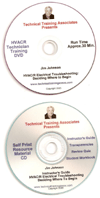Many people use the month of December as a time to think about their New Year’s resolutions and changes that they will be making the following year. Most of the time, these changes and resolutions are voluntary. However, for HVACR distributors, change is coming in 2015 courtesy of the federal government, and when Uncle Sam dictates change, there isn’t a heck of a lot to do but acquiesce.
On the plus side, you can at least tell yourself you’ve kept a resolution. On the negative side, these government-mandated changes are likely to have a detrimental impact on your business.
In the event you’ve been living under a rock, or at least in an area with spotty cell phone coverage, you know that on Jan. 1, 2015, new standards will take effect for a host of residential equipment products, and that two of these products (Central AC and Single-Package AC) will have regional efficiency standards that will differ by state.
One of the great unknowns is precisely how the government will enforce these new standards. Well, we now have our answer and the result will have an impact on all HVAC distributors, regardless of whether your company is in one of the new impacted regions.
[Author’s Note: Please keep in mind that there is an 18-month sell-through period in the South and Southwest regions for equipment that was manufactured before Jan. 1, 2015. The examples below apply to situations that are either after that sell-through period concludes or pertains to equipment manufactured after the end of 2014.]
Let’s start with the basics and the easy stuff. Distributors can violate the new standards by knowingly selling a product to a company or entity that the person intends to install the product in a region where it’s not supposed to go. Example one, a guy comes to a branch in Indiana and tells you that he needs to buy a 13 SEER product for a multifamily job in Louisville. At that point, you cannot sell him the 13 SEER product, because Kentucky is in the Southern Region and has a 14 SEER minimum standard.
Example two, the Department of Energy has labeled a contractor a routine violator, meaning that company has routinely violated the regional standard. DOE will make public that the entity is a routine violator and essentially put them on a “do not sell list.” If a distributor continues to sell product to that contractor, a violation would occur with each transaction.
It will be imperative for distributors to educate counter people, sales staff, branch managers and warehouse teams about the standards so that they catch any potential violation before the equipment leaves the branch. This will be particularly important for those distributors who live in areas that serve multiple regions and probably would have customers requesting minimum efficiency product for installation in multiple states.
Traditionally, DOE has only needed to focus on enforcement at the OEM level, by monitoring the certification process to make sure that equipment is performing at the levels that OEMs state. However, because this standard is different, DOE is requiring distributors to maintain certain records to help assist with an investigation. DOE has not issued a mandate on how to maintain the following records but only asks that they be reasonably accessible should a request from DOE come.
By Nov. 30, 2015, ALL distributors must maintain certain records for the sales of ALL outdoor condensing units and single-packaged A/C. On the purchasing side, distributors must maintain information about the date the product was purchased, the model and serial number of the product and who it was purchased from. On the sales side, distributors must keep records of to whom a product was sold, its model and serial numbers of the products sold (condensing units and single packaged A/C) and the date of the item’s sale. If you maintain delivery records, you must keep those as well.
The biggest transaction that these requirements are likely to impact are “house account sales” or those sales where a nonroutine customer comes in to purchase equipment without establishing an account. Moving forward, distributors must acquire the aforementioned information from the contractor.
Without question, these changes are likely to have the biggest impact on distributors since the implementation of EPA 608 requirements and will require process changes for many companies. Unlike that December 31 vow to drop 10 pounds, you won’t have the luxury of forgetting about these changes by the Super Bowl.








